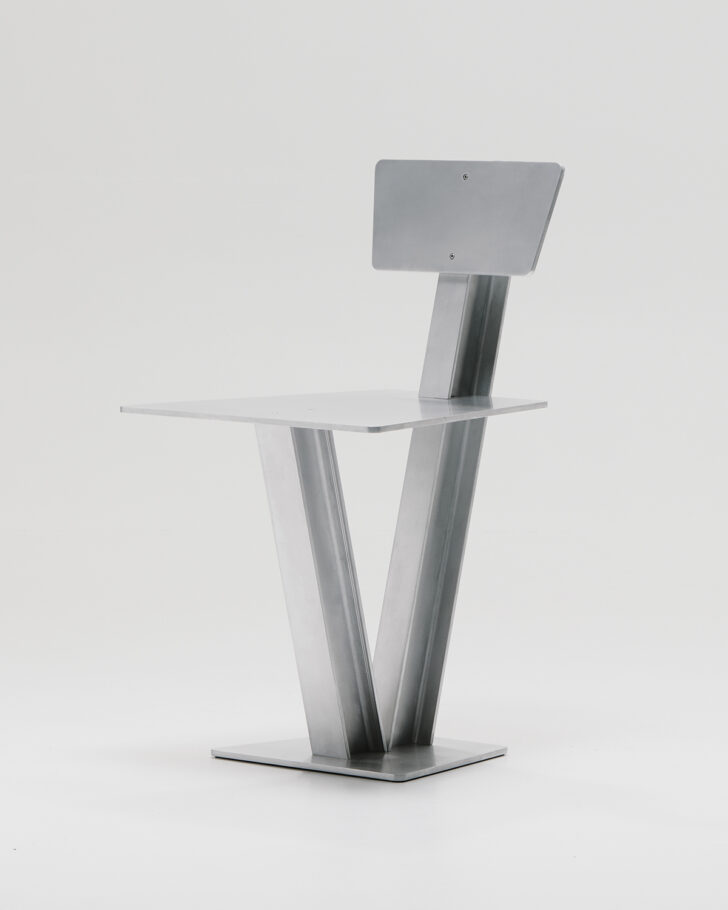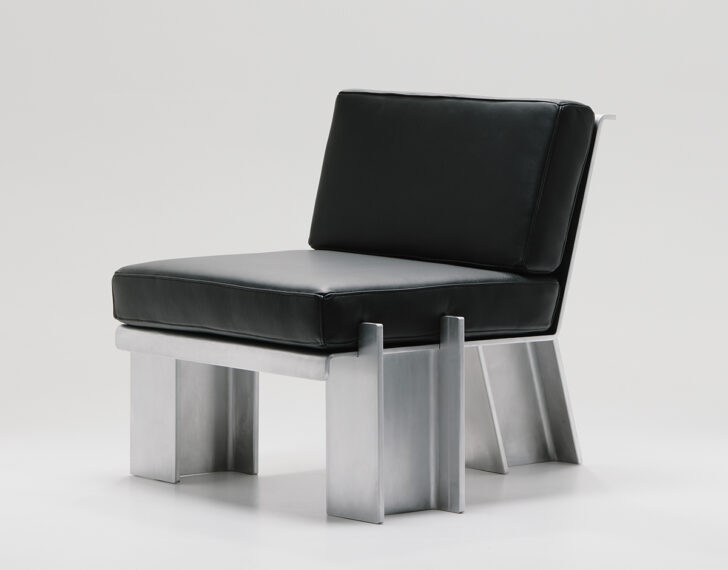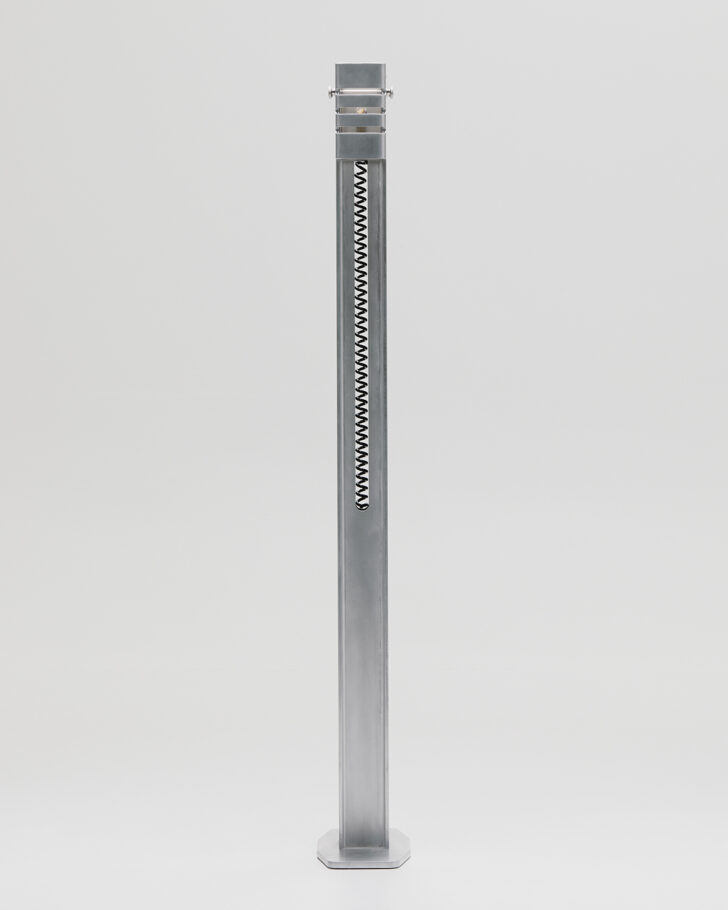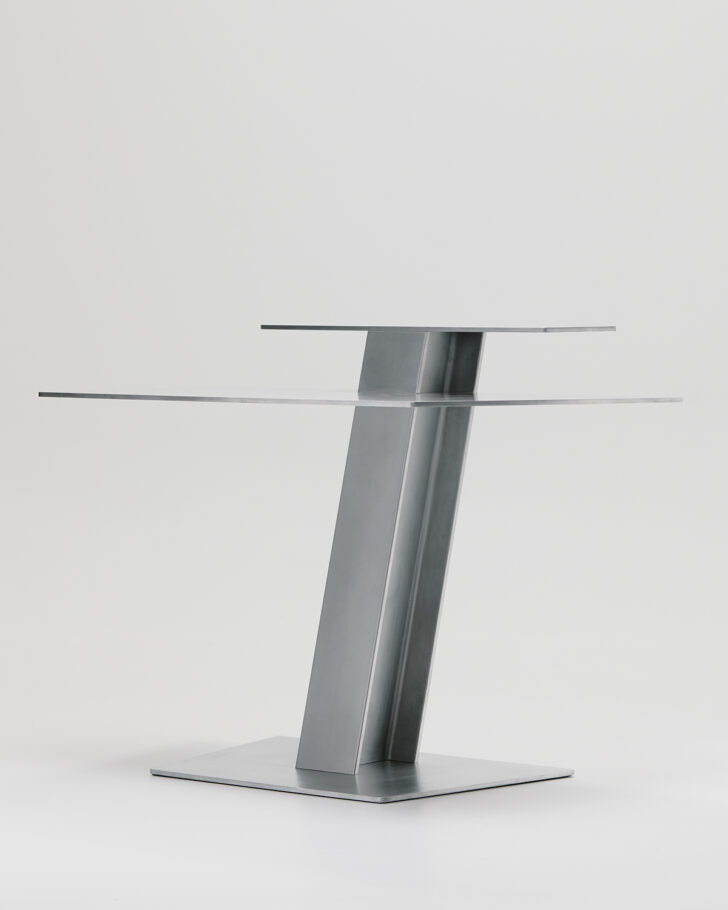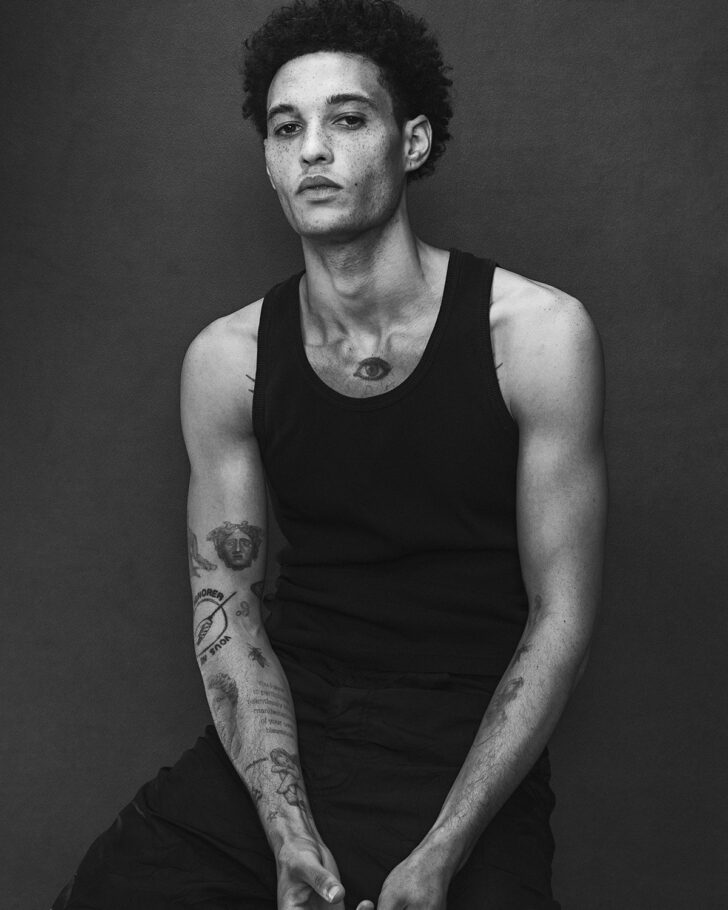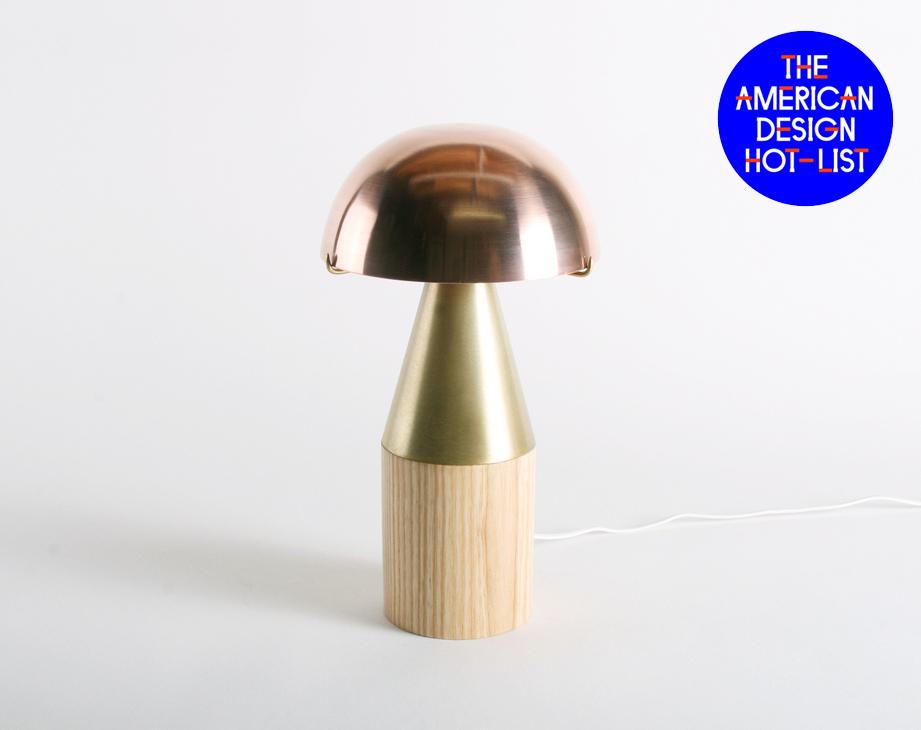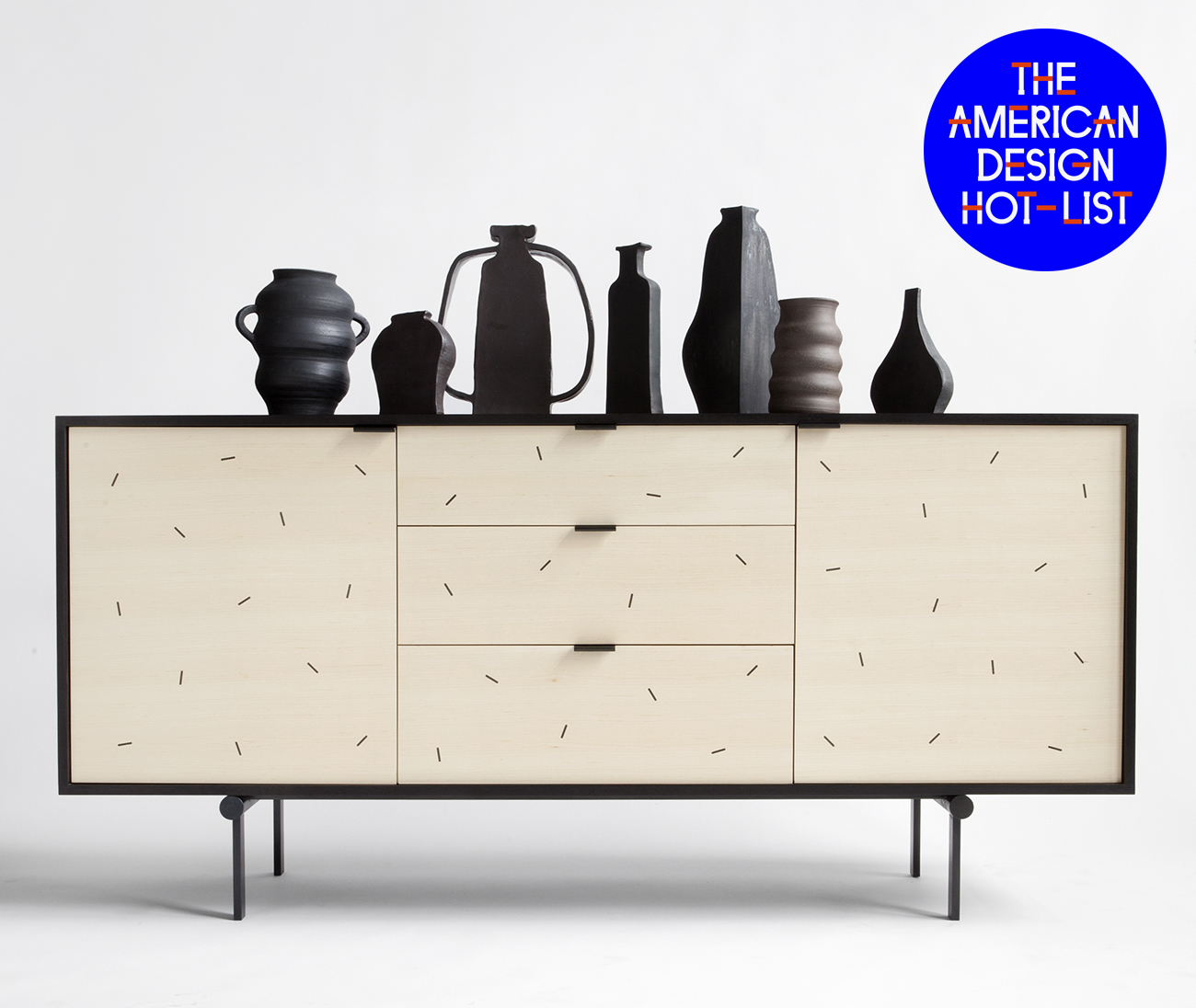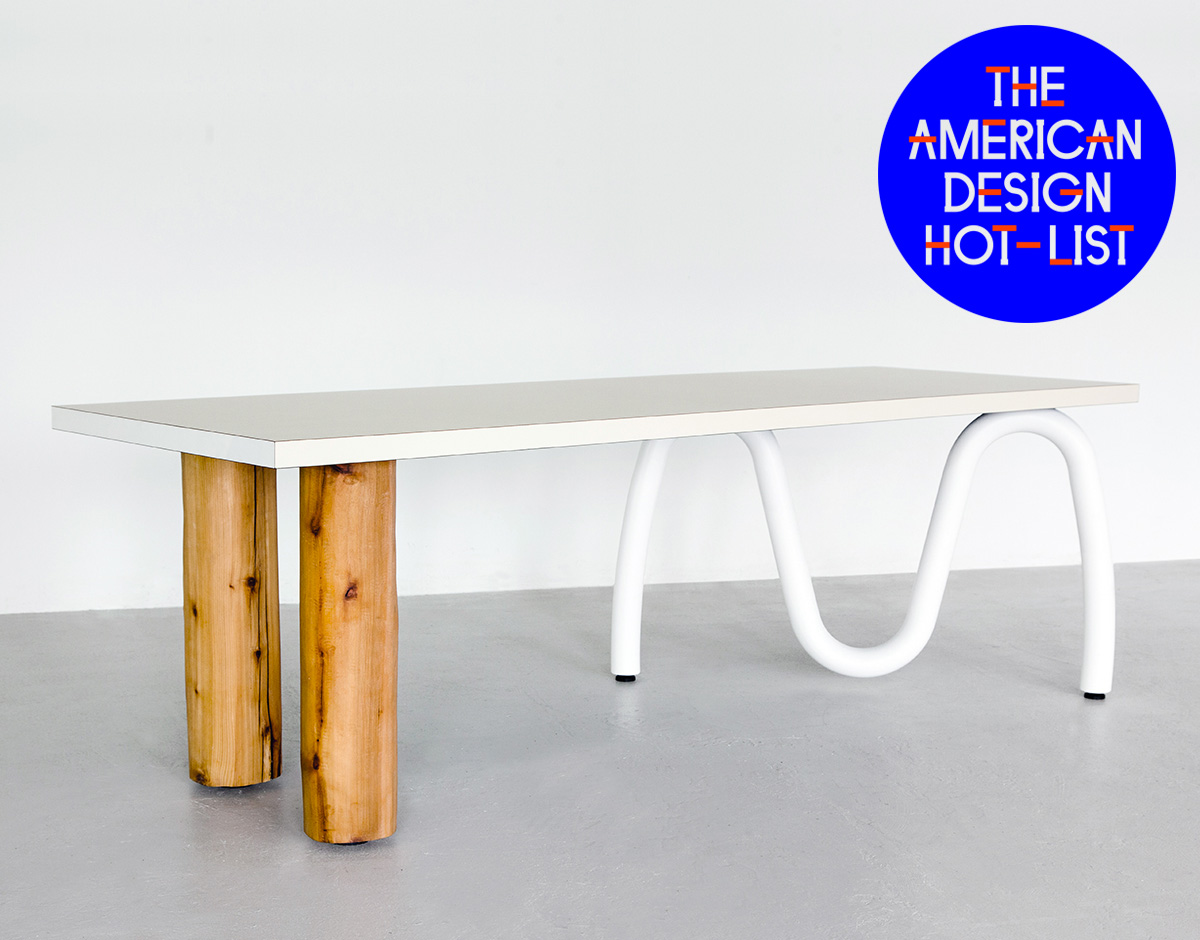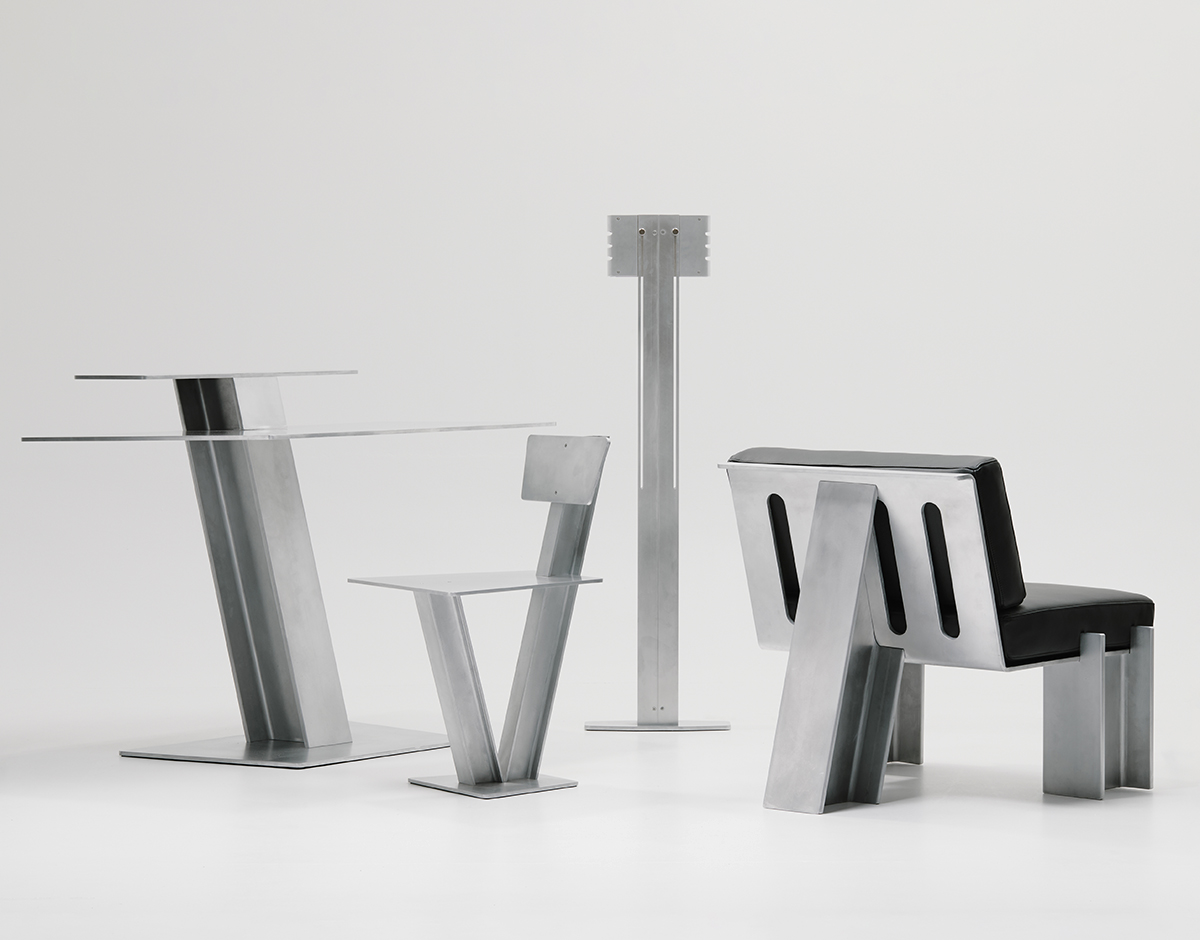
American Design Hot List 2024
Marquel Williams
Los Angeles, marquelwilliams.com
We first spotted the work of Marquel Williams at the Collectible Fair in New York this fall, which turned out to be a (partial) debut of his first furniture line: a lamp, desk, and two chairs made from i-beams and aluminum sheets. The pieces are highly utilitarian but with thoughtful, unexpected details like cutouts, cantilevers, and — on the lamp — adjustable-height shades and an interior channel that perfectly frames the spiral power cord inside. Also a model and co-founder of an archival fashion and design store — for which he created his first products, a hanger, tray, and ashtray — Williams is ready to push his new furniture practice further, and we’re keen to see the results.
What is American design to you, and what excites you about it?
There’s an interview with Yohji Yamamoto where he says, “In America, success means fame and money.” I think this sentiment has a certain correlation to design in the US as well. In many ways, the design market in America seems to outpace the country’s collective understanding or appreciation of design itself. America is one of the largest, if not the largest, consumer markets in the world, yet few design movements can be distinctly traced back to the States. Mid-century modernism, for example, became hugely popular here, but its origins lie in Europe. Minimalism, however, is one movement that did originate in America, though it was heavily influenced by the Bauhaus and began primarily as an art movement before spreading into design.
When I think about living American designers who are shaping the design landscape today, not many names come to mind. European and Asian designers often come to mind as global innovators. For international designers, breaking into the American market is often seen as a sign of “making it,” but that seems to speak more to the market’s power than to its creative leadership. I find myself more inspired by American artists and architects than by its designers. Donald Judd, for instance, started as an artist before venturing into design. American design still feels relatively young compared to other parts of the world. Of course, there are icons like Charles and Ray Eames, and the legacy of Herman Miller, but the landscape doesn’t feel as historically deep or defined.
That said, perhaps this newness is what excites me about American design. There’s a lot of potential and opportunity here. Maybe we’re on the cusp of witnessing — or even contributing to — a new movement that could redefine what American design means on a global scale.
What are your plans and highlights for the upcoming year?
I want to take time to isolate myself and deep-dive into learning new techniques, experimenting with more materials, and exploring new ways to work with aluminum — my current material of choice. I aim to release more work, even as I grapple with the inevitable uncertainty about how it will be received. My hope is to have the opportunity to showcase and exhibit this work in galleries and so on.
What inspires or informs your work in general?
It’s hard not to draw inspiration from past designers and their works; architecture, art, sculpture, and movements like the Bauhaus have all had a significant influence on me.
Interestingly, my ex-girlfriends have also influenced my work. While they didn’t teach me technical skills, they played a role in shaping my taste and its development over time. That said, I often feel that the work I’ve shown thus far doesn’t fully represent me or my evolving perspective. By the time a piece is completed and shared, I usually see areas I could have improved — it already feels outdated to me. My goal is to create work that feels timeless, something that maintains its relevance and impact over time.
I also draw inspiration from unexpected places: a misplaced object on the street, discarded furniture, or overlooked materials. There’s truth in the saying, “One man’s trash is another man’s treasure.”
I feel like I’m navigating two minds when it comes to my work. On one hand, I’m drawn to minimalism and simplicity in design; creating objects that are clear in purpose, functional, and easy to interpret. On the other hand, there’s a more artistic and experimental side of me that I haven’t fully expressed yet. This side is less concerned with functionality and more interested in exploring abstract, ambiguous forms and ideas. I’m excited to explore both of these approaches further and see how they might coexist within my work.